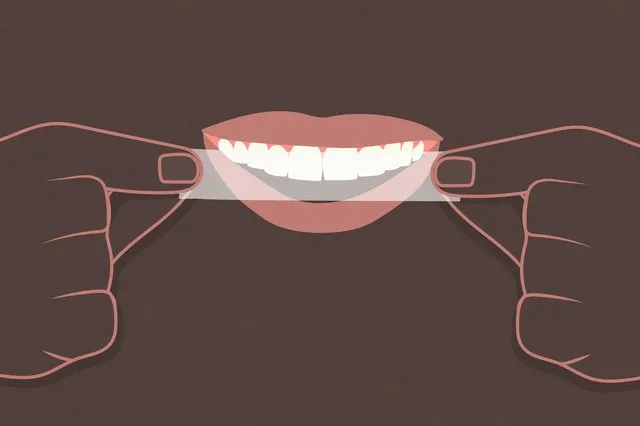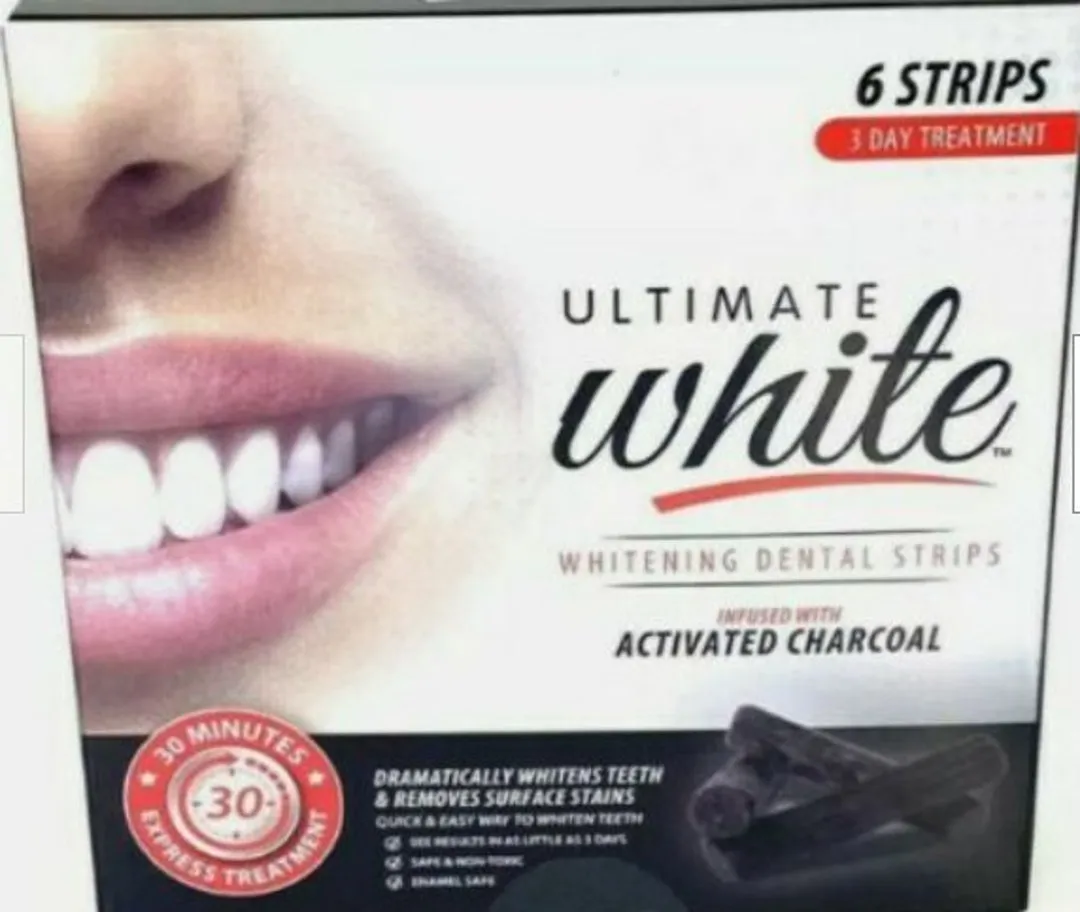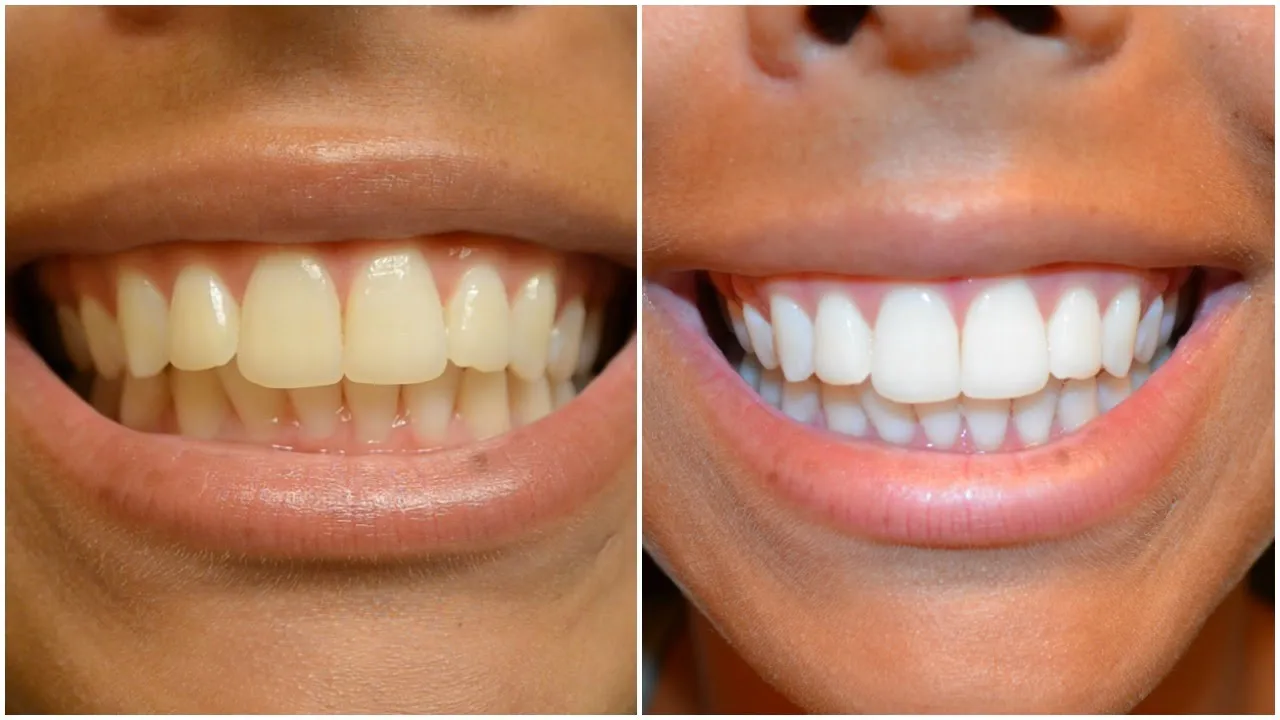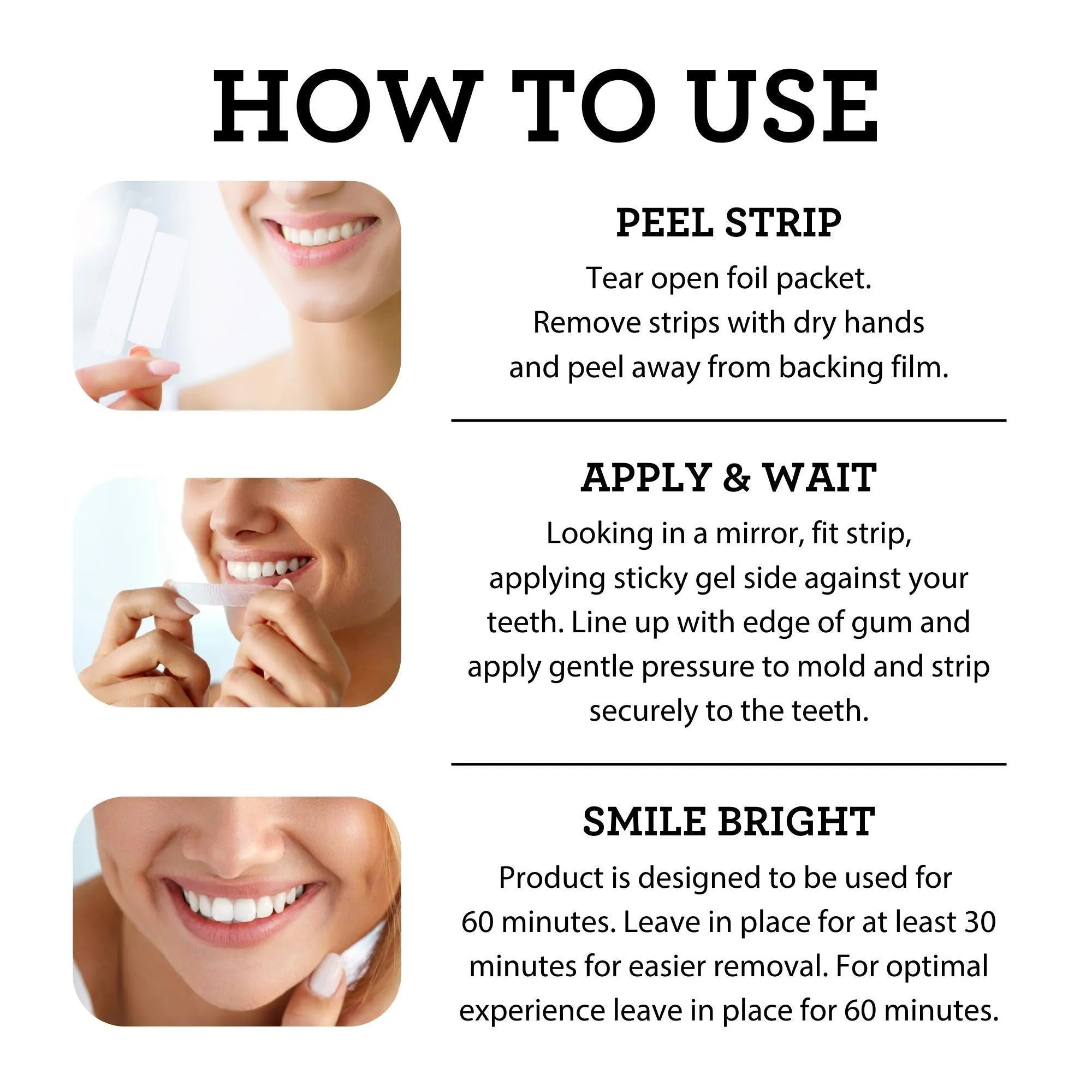Understanding Whitening Strips
Whitening strips have revolutionized the way people approach teeth whitening. They offer a convenient and accessible method for achieving a brighter smile from the comfort of your home. These thin, flexible strips are coated with a peroxide-based whitening agent, designed to adhere to your teeth and lift away stains and discoloration. Understanding how these strips work is the first step toward effectively using them. This guide will delve into every aspect, from selecting the right product to maximizing the results and minimizing potential side effects. Let’s begin by exploring the fundamental principles behind these popular teeth-whitening solutions.
How Whitening Strips Work
Whitening strips work through a chemical process involving the active ingredient, usually hydrogen peroxide or carbamide peroxide. When the strip comes into contact with the tooth enamel, the peroxide penetrates the enamel and breaks down the stain molecules. These molecules are then diffused, resulting in a lighter, brighter appearance of the teeth. The effectiveness of this process depends on the concentration of the peroxide, the duration of application, and the individual’s tooth structure and the type of stains present. Consistent use, as directed, is key to achieving the desired results, gradually lightening the teeth over a period of days or weeks.
The Science Behind Whitening Strips

The science behind whitening strips lies in the oxidation process. Peroxide, the active ingredient, releases oxygen molecules that react with the stain molecules on the teeth. This reaction effectively breaks the bonds that hold the stain molecules together, causing them to become less concentrated and, therefore, less visible. This process is similar to how bleach works on fabrics, but the concentration is carefully controlled to be safe for tooth enamel. The effectiveness can vary based on the enamel’s porosity and the type of stain (e.g., from coffee, tea, or tobacco). Professional-grade whitening treatments use higher concentrations, but over-the-counter strips offer a safe, although often slower, path to a whiter smile.
Choosing the Right Whitening Strips
Choosing the right whitening strips is crucial for achieving the best results and minimizing potential discomfort. The market offers a wide variety of products, each with its own unique features and benefits. Careful consideration of your specific needs and expectations is essential. Factors such as the severity of staining, tooth sensitivity, and budget should all play a role in your decision. Understanding the different types of strips available and the specific ingredients and their concentrations can greatly influence your experience and outcome. This section provides guidance on selecting the optimal product for your teeth whitening journey.
Types of Whitening Strips Available
Whitening strips come in several types, each with slight variations in design, application, and active ingredients. Some common types include those with a standard adhesive, designed for everyday use, and those with a more advanced grip for better adherence. There are also strips formulated for sensitive teeth, which typically contain lower concentrations of peroxide to minimize discomfort. Another variation includes strips that dissolve, which are designed for added convenience, eliminating the need to remove and dispose of the strip. The choice often depends on personal preference and the user’s specific dental needs and tolerances. It’s always beneficial to research and compare the different options to determine the best fit for your teeth and lifestyle.
Factors to Consider When Choosing Strips

Several factors should be considered when selecting whitening strips. The concentration of the active ingredient is a primary factor; higher concentrations may yield quicker results but can also increase sensitivity. The duration of application is another key consideration, as longer application times can potentially lead to better whitening, but also to more sensitivity. The type of teeth stains is also important; surface stains respond well to whitening strips, while deeper stains might require professional treatments. Finally, consider your tooth sensitivity level, and choose a formula designed for sensitive teeth if you’re prone to discomfort. Reading reviews and consulting with a dentist can also help you make an informed decision.
Step-by-Step Guide to Using Whitening Strips
Using whitening strips effectively involves following a specific set of steps to ensure optimal results and minimize potential side effects. Proper preparation, application, and post-application care are essential for maximizing the whitening effect while safeguarding your oral health. This section provides a detailed, step-by-step guide to help you achieve a brighter smile safely and efficiently. From prepping your teeth to understanding how long to leave the strips on, this comprehensive guide ensures you’re well-equipped to navigate the process with confidence.
Preparing Your Teeth
Before applying whitening strips, proper preparation of your teeth is crucial. Begin by brushing your teeth gently to remove any surface debris, but avoid brushing immediately before application, as this may increase sensitivity. Flossing is also recommended to eliminate any food particles between your teeth, ensuring the whitening agent has direct contact with the enamel. Make sure your teeth are dry before applying the strips; you can gently pat them dry with a clean towel. Preparing your teeth properly creates the ideal conditions for the whitening process, enhancing the effectiveness of the strips.
Applying the Whitening Strips

Carefully peel the whitening strips from their backing. Place the longer strip on your upper teeth and the shorter strip on your lower teeth, aligning them with the gumline to ensure full coverage. Gently press the strips against your teeth, molding them to the contours of your teeth to ensure good contact with the enamel. Avoid overlapping the strips onto your gums as this can cause irritation. Washing your hands before and after handling the strips is recommended for hygiene. Make sure that each tooth is completely covered by the strip for effective whitening. Proper application is key to achieving even and consistent results.
Optimal Application Time
The optimal application time varies depending on the product’s instructions. Always adhere to the specific guidelines provided with your whitening strips. The duration usually ranges from 30 minutes to an hour. Using the strips for longer than recommended will not necessarily enhance the whitening effect and may increase the risk of sensitivity. Set a timer to ensure you don’t exceed the recommended application time. Consistent use, as per the directions, will yield the best results. Be patient and avoid the temptation to leave the strips on longer, as this could lead to unwanted side effects and is not more effective.
Post-Application Care
After the recommended application time, carefully remove the strips. Dispose of them immediately. Rinse your mouth with water to remove any remaining gel residue, being careful not to swallow any. Avoid eating or drinking anything, except water, for at least 30 minutes after the treatment. Brushing your teeth immediately after can increase sensitivity; it’s best to wait at least an hour. Following these steps ensures you’re taking good care of your teeth and that you’re giving them the best environment to whiten effectively and safely.
Whitening Strips Application Duration Guidelines

The duration for which you leave whitening strips on is one of the most critical factors influencing their effectiveness and the potential for side effects. Understanding the guidelines provided by the product manufacturer is paramount. Application times vary widely, and adhering to the product’s instructions is crucial to achieving optimal results. This section delves into the importance of following the application instructions carefully, exploring factors that influence the recommended duration, and the common mistakes to avoid during the whitening process.
Following Product Instructions
The most critical guideline when using whitening strips is to meticulously follow the product instructions provided by the manufacturer. These instructions are based on clinical trials and are designed to maximize whitening while minimizing potential risks. The recommended application time, frequency, and any specific warnings should be observed diligently. Do not assume that leaving the strips on longer will enhance results; in fact, it can lead to increased sensitivity and gum irritation. Always refer to the packaging for the correct usage, and if you have any doubts, consult with your dentist or the product’s customer service before use. Proper use is the key to achieving a brighter, whiter smile safely.
Factors Influencing Application Time
Several factors influence the recommended application time for whitening strips. The concentration of the active ingredient (usually hydrogen peroxide) is the most significant factor. Higher concentrations generally require shorter application times due to their increased potency. The specific formulation of the strips, including the adhesive and the way the whitening agent is delivered, also plays a role. The product’s design and the type of stains on your teeth can also influence the duration. Some strips are designed for daily use with shorter application times, while others are intended for less frequent use with longer times. Always consider these variables and follow the product instructions carefully.
Common Mistakes to Avoid

Several common mistakes can hinder the effectiveness of whitening strips and may lead to adverse effects. One mistake is leaving the strips on for too long, thinking it will improve the whitening results. As mentioned earlier, this can lead to heightened sensitivity and gum irritation. Another mistake is using the strips more frequently than recommended, which can also increase the risk of side effects. Failing to properly prepare your teeth by brushing and flossing before use can reduce the effectiveness, as can not applying the strips correctly, which could lead to uneven whitening. Finally, ignoring any warnings or contraindications on the product packaging can lead to potentially serious issues. Always prioritize safety and adhere to the guidelines to maximize the benefits and minimize the risks.
Maximizing Results with Whitening Strips
To maximize the results from your whitening strips and maintain a bright, white smile, a holistic approach is necessary. This involves not only following the correct application procedures but also adopting lifestyle changes and good oral hygiene habits. From adjusting your diet to scheduling regular dental check-ups, the following guidelines can significantly enhance your teeth whitening journey. This section focuses on providing actionable tips to help you achieve and sustain a radiant, confident smile. With the right strategies, you can keep your teeth looking their best for an extended period.
Maintaining a White Smile
Maintaining a white smile after using whitening strips involves a combination of consistent oral hygiene practices and mindful lifestyle choices. Brushing your teeth twice a day with a whitening toothpaste can help remove surface stains. Flossing daily removes plaque and food particles, preventing staining. Regular dental check-ups and cleanings are essential for removing deeper stains and maintaining overall oral health. Consider using a whitening mouthwash for an extra boost. It’s also important to avoid behaviors that contribute to staining, like smoking or excessive consumption of staining foods and beverages.
Foods and Drinks to Avoid

Certain foods and drinks are notorious for staining teeth and should be minimized or avoided to maintain the results of your whitening treatment. Coffee, tea, and red wine are major culprits. Dark-colored sodas, fruit juices, and sports drinks can also contribute to staining. Foods like berries, soy sauce, and tomato-based sauces can also stain teeth. After consuming these items, it’s beneficial to rinse your mouth with water or brush your teeth to reduce the chance of staining. Choosing foods and drinks that won’t stain helps maintain your white smile.
Regular Dental Check-ups
Regular dental check-ups and professional cleanings are crucial for preserving your white smile and overall oral health. Dentists can remove plaque and tartar that regular brushing and flossing may miss, preventing stains and promoting healthy gums. They can also provide professional whitening treatments to touch up your smile as needed. During your check-ups, your dentist can assess your oral health and identify any potential issues early on. Following your dentist’s recommendations and adhering to a regular schedule ensures your smile remains bright, healthy, and vibrant. It’s also a great time to discuss any sensitivity or questions about your teeth.
Addressing Sensitivity and Side Effects
While whitening strips are generally safe, some individuals may experience side effects, such as tooth sensitivity or gum irritation. Understanding these potential issues and knowing how to manage them can help ensure a comfortable and successful whitening experience. This section provides practical advice on addressing sensitivity and gum irritation, allowing you to confidently navigate any potential challenges and maintain a bright smile. The tips and strategies provided ensure you can enjoy a whiter smile while minimizing any discomfort.
Managing Tooth Sensitivity
Tooth sensitivity is a common side effect of using whitening strips. If you experience this, there are several steps you can take to mitigate it. Reduce the frequency of your whitening treatments or reduce the amount of time the strips are applied. Using a toothpaste designed for sensitive teeth, which contains ingredients like potassium nitrate, can help block the pathways to the nerves and reduce sensitivity. Avoid excessively hot or cold foods and drinks, as these can exacerbate the sensitivity. Consult your dentist if the sensitivity persists or becomes severe, they can offer further treatments such as fluoride treatments or desensitizing agents.
Dealing with Gum Irritation
Gum irritation is another possible side effect of whitening strips, often caused by the whitening agent coming into contact with the gums. To manage gum irritation, ensure the strips are properly applied, avoiding any overlap onto your gums. If irritation occurs, discontinue use and allow your gums to heal. Rinsing your mouth with a saltwater solution can help soothe inflamed gums. Avoid brushing your teeth aggressively near the irritated area. If the irritation persists or worsens, consult with your dentist, they can provide further advice or treatment. Proper application techniques and following product instructions are vital to preventing gum irritation.
